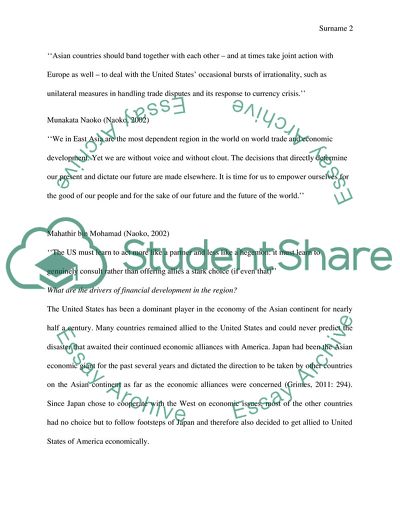Cite this document
(Origin of the Integration Thought Essay Example | Topics and Well Written Essays - 2250 words, n.d.)
Origin of the Integration Thought Essay Example | Topics and Well Written Essays - 2250 words. https://studentshare.org/macro-microeconomics/1825308-13critically-evaluate-progress-towards-financial-integration-in-east-asia-in-the-wake-of-the-2008-global-financial-crisis
Origin of the Integration Thought Essay Example | Topics and Well Written Essays - 2250 words. https://studentshare.org/macro-microeconomics/1825308-13critically-evaluate-progress-towards-financial-integration-in-east-asia-in-the-wake-of-the-2008-global-financial-crisis
(Origin of the Integration Thought Essay Example | Topics and Well Written Essays - 2250 Words)
Origin of the Integration Thought Essay Example | Topics and Well Written Essays - 2250 Words. https://studentshare.org/macro-microeconomics/1825308-13critically-evaluate-progress-towards-financial-integration-in-east-asia-in-the-wake-of-the-2008-global-financial-crisis.
Origin of the Integration Thought Essay Example | Topics and Well Written Essays - 2250 Words. https://studentshare.org/macro-microeconomics/1825308-13critically-evaluate-progress-towards-financial-integration-in-east-asia-in-the-wake-of-the-2008-global-financial-crisis.
“Origin of the Integration Thought Essay Example | Topics and Well Written Essays - 2250 Words”. https://studentshare.org/macro-microeconomics/1825308-13critically-evaluate-progress-towards-financial-integration-in-east-asia-in-the-wake-of-the-2008-global-financial-crisis.


